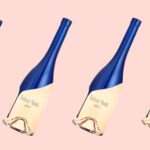Preserving wine is not something you can improvise. A few essential parameters influence the quality of a wine over the years. Cellar temperature, humidity and light play a decisive role. Here are the basic rules for optimal wine preservation at home.
Cellar temperature: stability first
Wine hates temperature variations. The ideal cellar temperature is between 11 and 14 degrees. This threshold allows the wine to age slowly, without altering its taste qualities. Too high a temperature accelerates its evolution. Too low a temperature slows down its aromas.
Avoid rooms close to heating or exposed to frequent changes. A stable cellar temperature protects the structure of the wine. Install a reliable thermometer to monitor the atmosphere. Natural cellars often offer the best conditions, but an electric cellar is an excellent alternative.
Wine preservation: the key role of hygrometry
Hygrometry, or humidity level, influences cork longevity. Correct wine storage requires a humidity level of between 60% and 75%. Below this level, the cork dries out. The wine oxidizes. Above this level, mold sets in on labels and cases.
Use a hygrometer to monitor humidity. If the air is too dry, install a water tray in your cellar. Too humid? Improve ventilation. Good wine conservation requires a precise balance between dry and humid air.
Wine light: a silent enemy
Light in wine is all too often neglected. UV rays damage tannins and aromas. They change the color of wine. Too much light can ruin a bottle of grand cru. Red wines are particularly sensitive.
Always store your bottles in the dark. Underground, dark cellars are ideal. Otherwise, use soft, yellow lighting and avoid neon lights. Protecting wine from light preserves its freshness and complex aromas.
The importance of bottle position
Wine is stored lying down. This position keeps the cork moist. A dry cork loses its seal. Air enters. Oxidation begins. A well-organized cellar should have horizontal racks for all bottles with natural corks.
Wines with synthetic corks or screw caps can remain upright. However, for the sake of coherence and legibility, it is preferable to standardize orientation. Good wine storage also implies logical space management.
Cellar temperature according to wine type
The reds can withstand slightly higher temperatures. Between 13 and 15 degrees, they develop harmoniously. Whites, more fragile, prefer 11 to 12 degrees. Champagne and sparkling wines require even more freshness: around 10 degrees.
Don't mix too many styles in the same space. If your cellar temperature varies, you risk penalizing certain bottles. A multi-zone cellar is recommended for those who store a wide variety of wines.
Long-term wine storage: mistakes to avoid
Avoid places that are too noisy or subject to vibrations. Wine needs rest. The garage is not always a good choice, especially if you store motorized equipment. The same goes for kitchens, where odors and temperature rises are detrimental to wine preservation.
Label rows of bottles to keep track of purchase dates. Regular rotation avoids unpleasant surprises. Too many collectors discover wines that have become undrinkable through lack of follow-up.
Wine lighting: think aesthetics too
It's tempting to put your best bottles on display. But poorly controlled wine lighting compromises the pleasure of tasting. If aesthetics are important to you, use tinted glass or indirect LED lighting. Avoid direct sunlight at all costs, even indoors.
Wine is not a decorative object. It's a living, evolving product. Respecting the rules of darkness guarantees successful tasting.
Cellar temperature and home automation: modernize your management
Today, connected technologies enable remote monitoring of cellar temperature and hygrometry. These systems warn you of any anomalies. They help you act quickly to protect your bottles.
Some models even include mobile applications to monitor wine storage in real time. For demanding wine lovers, this is a useful and reassuring investment.
Wine light in electric wine cellars
Electric cellars often have built-in lighting. Make sure it is limited in time. Constant wine light disrupts the ripening process. Choose a model with soft lighting, specially designed for bottles.
Do not leave the door open too long. Every time you open it, the thermal balance is upset. Respect the wine's tranquility.
Wine conservation: an art of living
Knowing how to store your wine means prolonging the pleasure. It also means honoring the work of the winemaker. Successful wine conservation is based on simple gestures. They must become reflexes. A well-designed cellar is an asset for any wine-lover.
Even if you only have a few bottles, take good care of them. Their quality depends on time. And time offers nothing without the right conditions.
If you enjoyed this article, you might also like to read "Portugal's wines: between tradition and innovation"!






